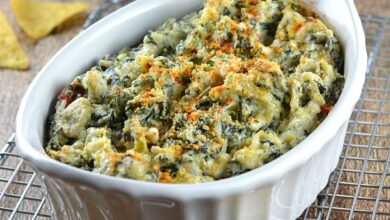
Greek Tomato Feta Fritters Domatokeftethes: A Taste of Greece
Greek Tomato Feta Fritters Domatokeftethes, a delightful dish that captures the essence of Greece, are a testament to the country’s rich culinary heritage. These savory fritters, traditionally made with ripe tomatoes, tangy feta cheese, and aromatic herbs, offer a burst of flavor and texture that is sure to tantalize your taste buds.
Domatokeftethes are a staple in Greek cuisine, enjoyed as a starter, side dish, or even a light meal. They are a versatile dish that can be adapted to suit various tastes and preferences, making them a popular choice for both home cooks and professional chefs.
From humble beginnings as a simple peasant dish, Domatokeftethes have evolved into a culinary icon, enjoyed across Greece and beyond. Their popularity can be attributed to their simplicity, affordability, and the irresistible combination of flavors that they offer. Whether you are a seasoned foodie or a curious beginner, Domatokeftethes are a dish worth exploring, promising a culinary journey into the heart of Greece.
Introduction to Domatokeftethes

Domatokeftethes, also known as tomato fritters, are a beloved Greek appetizer or meze, deeply rooted in the country’s culinary tradition. These flavorful and satisfying fritters are a testament to the simplicity and ingenuity of Greek cuisine, showcasing the fresh, vibrant flavors of the Mediterranean.Domatokeftethes have been a staple in Greek kitchens for generations, their origins tracing back to the time when tomatoes were first introduced to the country.
Greek tomato feta fritters, domatokeftethes, are a delightful appetizer, bursting with Mediterranean flavors. They’re a perfect starter to any meal, especially when paired with something smoky and savory like grilled asparagus steak bundles. The contrast between the creamy, tangy fritters and the smoky, tender steak bundles creates a delicious harmony on the palate.
Domatokeftethes are simple to make, and their vibrant flavor will make you feel like you’re on a Greek island, even if you’re just enjoying them at home.
With their humble ingredients and straightforward preparation, these fritters embody the essence of Greek gastronomy, where fresh, seasonal produce takes center stage.
The Ingredients and Preparation of Domatokeftethes
Domatokeftethes are traditionally made with a few simple yet essential ingredients. The foundation of these fritters is ripe, juicy tomatoes, which are typically grated or finely chopped. The tomatoes are then combined with crumbled feta cheese, fresh herbs like dill and parsley, and a touch of flour to bind the mixture.
Domatokeftethes, those little Greek tomato and feta fritters, are always a hit. They’re so flavorful and satisfying, especially when served with a creamy yogurt dip. If you’re looking for another savory appetizer that’s just as easy to make, check out these chicken and mushroom crepes.
They’re a great option for a light lunch or a quick dinner. But, back to those domatokeftethes – they’re definitely a must-try for anyone who loves Greek cuisine.
The ingredients are thoroughly blended to create a smooth and flavorful batter, which is then formed into small, flat patties. The patties are then pan-fried in olive oil until golden brown and crispy on the outside, while remaining soft and juicy on the inside.
The cooking process releases the natural sweetness of the tomatoes and enhances the savory flavors of the feta cheese. The aroma of fried herbs and olive oil adds a distinct fragrance to the fritters, making them irresistible.
The Role of Domatokeftethes in Greek Cuisine
Domatokeftethes hold a special place in Greek cuisine, serving as a versatile and popular dish that can be enjoyed in various settings. These fritters are a classic meze, often served alongside other appetizers like tzatziki, olives, and dolmades, during gatherings and celebrations.
They are also a popular choice for a light lunch or dinner, especially during the summer months when tomatoes are in season.The popularity of domatokeftethes extends beyond Greece, as they have become a beloved dish in many parts of the world.
Their simple yet flavorful nature, along with their versatility, has made them a favorite among food enthusiasts seeking authentic Greek cuisine.
Ingredients and Variations

Domatokeftethes, those irresistible Greek tomato fritters, are a delightful treat that’s easy to customize. The base recipe is simple, but there’s room for creative exploration to match your taste and pantry.
Essential Ingredients
- Ripe Tomatoes:The heart of the dish, choose juicy, flavorful tomatoes for the best results. About 4-5 medium-sized tomatoes will be enough. If you prefer a more intense tomato flavor, use Roma tomatoes.
- Feta Cheese:Crumbled feta adds a tangy, salty punch. Use about 1/2 cup, or more if you enjoy a stronger feta flavor.
- Fresh Herbs:A handful of fresh herbs like dill, mint, or parsley adds a vibrant aroma and freshness.
- Onion:A small, finely chopped onion adds a savory depth to the fritters.
- Garlic:A clove or two of garlic adds a pungent aroma and flavor.
- Flour:About 1/4 cup of all-purpose flour binds the mixture together.
- Eggs:One or two eggs help to hold the fritters together and create a light, fluffy texture.
- Salt and Pepper:Season to taste, remembering that feta is already salty.
- Olive Oil:For frying the fritters to a golden brown perfection.
Common Variations
The beauty of domatokeftethes lies in its adaptability. Across Greece, variations exist, reflecting regional preferences and available ingredients. Here are some popular variations:
Regional Differences
| Region | Key Ingredients | Characteristics |
|---|---|---|
| Crete | Rusks (papadaki) | Crispier texture, more rustic flavor |
| Cyclades Islands | Dried oregano, thyme | Stronger herbal flavors, more intense aroma |
| Northern Greece | Feta cheese, fresh dill | Classic combination, often served with yogurt |
Alternative Ingredients
Feel free to experiment with different ingredients to create your own unique domatokeftethes.
- Cheese:While feta is the traditional choice, you can substitute with other cheeses like goat cheese, ricotta, or even crumbled halloumi for a richer flavor.
- Vegetables:Add diced zucchini, bell peppers, or eggplant for extra texture and flavor.
- Spices:Experiment with spices like cumin, paprika, or chili flakes for a bolder taste.
- Breadcrumbs:Replace flour with breadcrumbs for a crispier exterior.
Preparation Process
Now that you’ve gathered all the ingredients, let’s dive into the simple yet rewarding process of making these delicious fritters. It’s a straightforward recipe that allows for a bit of creativity, so feel free to experiment with different herbs and spices.
Preparing the Tomatoes
The key to perfectly textured domatokeftethes lies in the tomatoes. Here’s how to get them ready:
- Blanch and Peel:Bring a pot of water to a boil. Carefully drop the tomatoes into the boiling water for about 30 seconds, then transfer them to a bowl of ice water. This will loosen the skin, making it easy to peel. Once cooled, peel off the skins and discard them.
- Dice the Tomatoes:Using a sharp knife, dice the peeled tomatoes into small, even pieces. The consistency of the diced tomatoes will affect the texture of the fritters, so aim for a uniform size.
Combining the Ingredients
Once the tomatoes are prepped, it’s time to bring everything together:
- Combine Dry Ingredients:In a large bowl, whisk together the flour, salt, and pepper. This creates a base for the fritters.
- Add the Tomatoes:Gently fold the diced tomatoes into the dry ingredients. Avoid overmixing, as you want to maintain the tomato chunks.
- Incorporate the Herbs:Stir in the chopped fresh herbs, such as dill, mint, or parsley. These herbs add a refreshing burst of flavor to the fritters.
- Mix in the Feta:Crumble the feta cheese into the mixture. The feta cheese provides a salty, tangy counterpoint to the sweetness of the tomatoes.
- Add the Eggs:Crack the eggs into a separate bowl and whisk them lightly. Gradually add the beaten eggs to the tomato mixture, stirring gently to combine. The eggs help bind the ingredients and create a cohesive fritter batter.
Cooking the Domatokeftethes
The final step is cooking the fritters to golden perfection:
- Heat the Oil:Pour enough olive oil into a large skillet or frying pan to reach a depth of about ½ inch. Heat the oil over medium heat until it shimmers.
- Form the Fritters:Using a spoon or a small ice cream scoop, drop spoonfuls of the tomato mixture into the hot oil. Fry the fritters in batches, ensuring not to overcrowd the pan.
- Cook Until Golden:Fry the fritters for about 3-4 minutes per side, or until they are golden brown and cooked through. Avoid overcooking, as this will make them dry and crumbly.
- Drain and Serve:Once cooked, remove the fritters from the pan and drain them on paper towels to absorb excess oil. Serve hot, garnished with a sprinkle of fresh herbs and a drizzle of olive oil.
Tips for Perfect Domatokeftethes
- Don’t Overmix:Overmixing the batter will result in tough fritters. Gently fold the ingredients together to maintain a slightly chunky texture.
- Use Fresh Herbs:Fresh herbs add a vibrant flavor that can’t be replicated with dried herbs. Choose your favorites, such as dill, mint, or parsley.
- Adjust the Salt:Taste the batter before frying and adjust the salt level to your preference. The feta cheese adds saltiness, so keep that in mind.
- Control the Heat:Maintain a medium heat while frying to ensure the fritters cook evenly and don’t burn. Adjust the heat as needed.
- Don’t Overcrowd the Pan:Fry the fritters in batches to ensure they have enough space to cook evenly. Overcrowding will lead to soggy fritters.
Presentation Ideas, Greek tomato feta fritters domatokeftethes
These fritters are visually appealing on their own, but you can enhance their presentation for a more impressive display:
- Serve with a Side Salad:Pair the fritters with a simple Greek salad, featuring fresh tomatoes, cucumbers, red onion, and feta cheese.
- Garnish with Herbs:Sprinkle fresh herbs, such as dill, mint, or parsley, over the fritters for an extra touch of freshness and color.
- Drizzle with Olive Oil:A drizzle of high-quality olive oil adds richness and shine to the fritters.
- Arrange on a Platter:Arrange the fritters on a platter with a bed of lettuce or a sprinkle of fresh herbs for a more elegant presentation.
Serving and Pairing
Domatokeftethes are a versatile dish that can be enjoyed in various ways, making them a perfect addition to any meal. Whether you’re serving them as a starter, a side dish, or a main course, there are numerous options to elevate the experience.
Domatokeftethes, those crispy little Greek tomato and feta fritters, always remind me of sunshine and warm summer days. The salty feta and juicy tomatoes, all fried to golden perfection, are a perfect appetizer or light lunch. Speaking of delicious fried treats, have you ever tried Chesapeake Bay stuffed rockfish?
Chesapeake Bay stuffed rockfish is a classic dish that’s packed with flavor, and the combination of flaky fish and savory stuffing is simply irresistible. Back to domatokeftethes, they’re incredibly versatile and can be enjoyed with a simple yogurt dip or a more complex tzatziki sauce.
Either way, they’re sure to be a crowd-pleaser.
Serving Options
- Traditional Serving: In Greece, domatokeftethes are often served as a meze (appetizer) alongside other small plates. They are traditionally served warm, but can also be enjoyed at room temperature. They are often accompanied by a simple side of tzatziki sauce, a creamy yogurt dip with cucumbers and garlic, or a drizzle of olive oil.
- Modern Serving: Modern interpretations of domatokeftethes might feature a more elaborate presentation. For example, they could be served atop a bed of fresh greens with a drizzle of balsamic glaze and a sprinkle of crumbled feta cheese. They could also be served as a topping for salads, sandwiches, or even pizzas.
Ideal Temperature and Timing
The ideal temperature for serving domatokeftethes is warm, but not hot. The fritters should be cooked through but still retain some moisture and a slightly soft texture. They can be served immediately after cooking or reheated gently in the oven or microwave.
It’s important to avoid overcooking, as this can make them dry and tough.
Pairing Suggestions
- Beverage Pairings: Domatokeftethes pair well with a variety of beverages, including:
- White Wine: Dry, crisp white wines such as Assyrtiko, Sauvignon Blanc, or Pinot Grigio complement the tomato flavor and acidity of the fritters.
- Rosé Wine: A light and refreshing rosé wine can also be a good pairing, especially if the domatokeftethes are served with a side of tzatziki.
- Beer: A light lager or a wheat beer can also work well with domatokeftethes, especially if they are served with a side of grilled meats or vegetables.
- Dish Pairings: Domatokeftethes can be paired with a variety of dishes, including:
- Greek Salads: Domatokeftethes make a great addition to a traditional Greek salad, adding a flavorful and textural contrast to the fresh vegetables.
- Grilled Meats: Domatokeftethes can also be served alongside grilled meats, such as lamb, chicken, or pork. The fritters provide a refreshing and flavorful counterpoint to the richness of the grilled meats.
- Rice Dishes: Domatokeftethes can also be served with rice dishes, such as pilaf or orzo. The fritters add a savory and flavorful element to the rice dishes.
Nutritional Value and Benefits

Domatokeftethes, despite their indulgent nature, offer a surprisingly nutritious and satisfying snack or appetizer. They are packed with essential vitamins, minerals, and antioxidants, making them a healthy addition to your Mediterranean diet.
Nutritional Breakdown
Domatokeftethes are a good source of several essential nutrients.
- Vitamins:They are rich in vitamin C, a powerful antioxidant that supports immune function and collagen production. They also contain vitamin A, essential for vision and skin health, and vitamin K, which aids in blood clotting.
- Minerals:Domatokeftethes are a good source of potassium, which helps regulate blood pressure and muscle function. They also contain calcium, crucial for bone health, and iron, essential for oxygen transport in the body.
- Macronutrients:While domatokeftethes are not a primary source of protein, they provide a decent amount of carbohydrates, primarily from the tomatoes and bread crumbs. The feta cheese adds a healthy dose of fat, mainly unsaturated, which can be beneficial for heart health.
Antioxidant and Anti-inflammatory Properties
The abundance of tomatoes in domatokeftethes provides a significant source of lycopene, a powerful antioxidant known for its anti-inflammatory properties. Lycopene has been linked to reduced risk of heart disease, certain types of cancer, and age-related macular degeneration.
The consumption of tomatoes and tomato-based products is associated with a lower risk of cardiovascular disease, certain types of cancer, and age-related macular degeneration.
Additionally, the olive oil used in the recipe provides oleic acid, another anti-inflammatory compound that may benefit heart health.
Role in a Balanced Diet
Domatokeftethes can be a healthy and flavorful addition to a balanced diet. They offer a good source of vitamins, minerals, and antioxidants, and can be enjoyed as part of a Mediterranean-inspired meal plan. However, it’s important to consume them in moderation as they are relatively high in calories and fat.
They can be paired with a variety of dishes, such as grilled fish, salads, or whole grain bread, for a well-rounded and nutritious meal.
Culinary Significance and Cultural Impact
Domatokeftethes, the humble tomato and feta fritters, hold a special place in Greek culinary traditions, reflecting the country’s rich agricultural heritage and vibrant culture. These savory delights are a testament to the Mediterranean diet’s emphasis on fresh, simple, and wholesome ingredients, showcasing the essence of Greek cuisine.
Connection to the Mediterranean Diet
The ingredients of domatokeftethes, primarily tomatoes, feta cheese, and herbs, are staples of the Mediterranean diet, known for its health benefits and emphasis on fresh produce. The Mediterranean diet is characterized by a high intake of fruits, vegetables, whole grains, legumes, olive oil, and fish, while limiting saturated fat, red meat, and processed foods.
Domatokeftethes perfectly embodies this dietary approach, showcasing the vibrant flavors and nutritional value of fresh ingredients.
Cultural Significance in Greek Society
Domatokeftethes are deeply ingrained in Greek culture, often served at family gatherings, festivals, and special occasions. They are a cherished comfort food, evoking memories of childhood summers spent with loved ones, enjoying meals outdoors under the warm Mediterranean sun.
Anecdotes and Stories about Domatokeftethes
The aroma of frying domatokeftethes fills many Greek kitchens, a familiar scent that transports people back to their roots and family traditions. These fritters are often passed down through generations, with each family having their own unique recipe and variations.
Stories abound of grandmothers sharing their secret ingredient or techniques with their grandchildren, ensuring the legacy of this beloved dish lives on.
“My grandmother’s domatokeftethes were legendary,” says Maria, a Greek woman living in the United States. “Every time I taste them, I’m transported back to my childhood summers in Greece, sitting on the patio with my family, enjoying the simple pleasures of life.”
Domatokeftethes in Modern Cuisine: Greek Tomato Feta Fritters Domatokeftethes
Domatokeftethes, a beloved Greek comfort food, has experienced a renaissance in modern cuisine, with chefs and restaurants reinterpreting this classic dish in innovative ways. From gourmet variations to trendy interpretations, domatokeftethes has found a new home in the kitchens of culinary pioneers, captivating diners with its unique flavor profile and versatility.
Innovative Variations and Reinterpretations
Modern chefs are pushing the boundaries of traditional domatokeftethes, introducing new ingredients and techniques to create unique and exciting variations. One notable trend is the use of premium ingredients, such as heirloom tomatoes, artisanal feta cheese, and fresh herbs, elevating the dish to new heights of flavor and texture.
“We use only the finest ingredients, like vine-ripened tomatoes and sheep’s milk feta, to create a domatokeftethes that is both authentic and refined.”
Chef Elena, acclaimed Greek restaurant in Athens.
Other chefs are experimenting with different cooking methods, such as grilling, pan-frying, or even baking, to achieve distinct textures and flavors. Some have incorporated elements of global cuisine, incorporating spices like cumin, coriander, or paprika to create fusion dishes that tantalize the palate.
Chefs and Restaurants Incorporating Domatokeftethes
Several renowned chefs and restaurants have embraced domatokeftethes, showcasing their culinary prowess through innovative interpretations of this classic dish.
- Chef Yiannis Kioroglou, Estiatorio Milos (New York City):Known for his commitment to authentic Greek cuisine, Chef Kioroglou presents a modern take on domatokeftethes, featuring a crispy exterior and a soft, flavorful interior, served with a tangy yogurt sauce.
- Chef Michael Mina, Michael Mina (San Francisco):Chef Mina’s interpretation of domatokeftethes features a blend of tomatoes, feta, and herbs, pan-fried to perfection and served with a refreshing lemon-herb sauce.
- Chef Maria Loi, Loi Estiatorio (New York City):Chef Loi’s domatokeftethes is a testament to her culinary artistry, incorporating fresh, seasonal ingredients and traditional Greek flavors.
Potential for Domatokeftethes to Become a Global Culinary Trend
Domatokeftethes possesses the potential to become a global culinary trend, due to its versatility, affordability, and delicious flavor profile. Its simple ingredients and easy preparation make it accessible to home cooks and professional chefs alike.
“Domatokeftethes is a dish that can be enjoyed by everyone, regardless of their culinary experience. It’s a blank canvas for creativity, allowing chefs to experiment with different flavors and textures.”
Chef Dimitri, renowned culinary expert.
The growing popularity of Mediterranean cuisine and the increasing demand for plant-based options further support the potential for domatokeftethes to gain global recognition. Its vibrant flavors and nutritious ingredients make it an appealing choice for health-conscious diners, while its rustic charm and cultural significance add to its allure.






